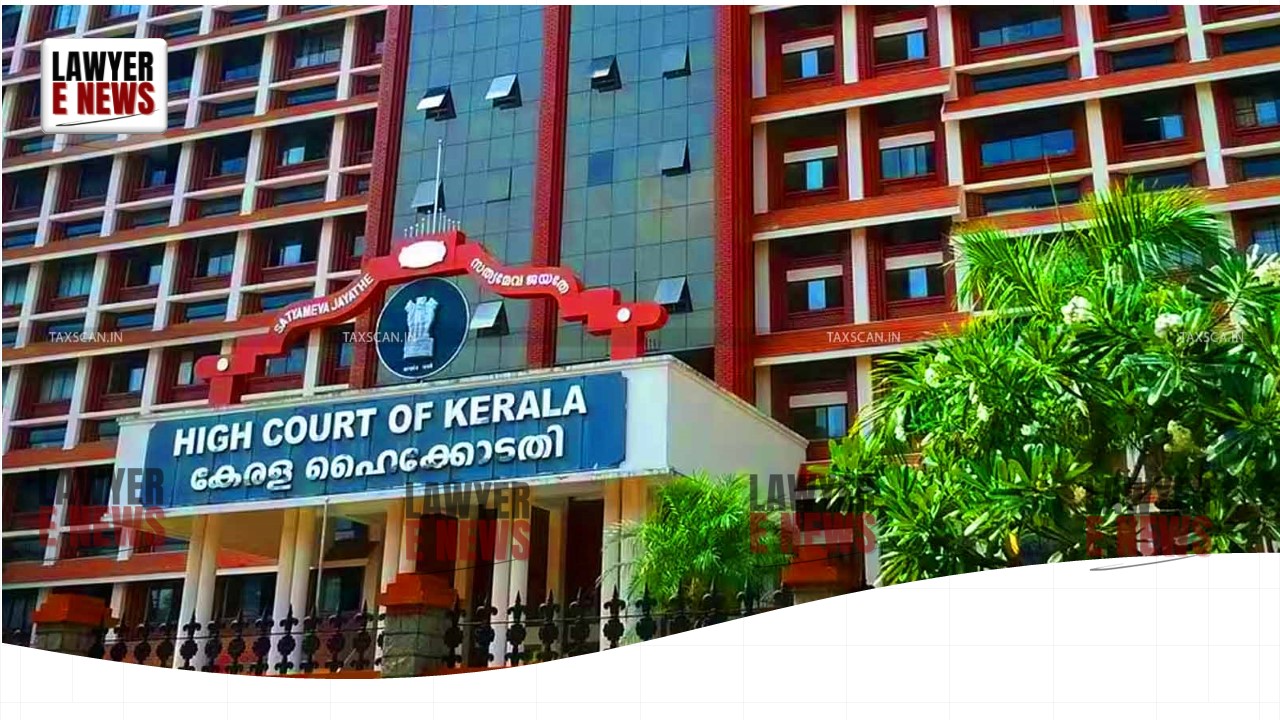-
by Admin
17 December 2025 10:10 AM



Kerala High Court, comprising Chief Justice Nitin Jamdar and Justice S. Manu, upheld the earlier decision of the learned Single Judge, concluding that an open-to-air driveway leading to a terrace parking area does not constitute part of the built-up area under the Kerala Municipality Building Rules, 2019. The judgment is significant in its detailed interpretation of building regulations and urban planning principles, particularly concerning terrace parking in commercial constructions.
The court remarked, “It would be illogical to permit open parking on the terrace and exempt it from the built-up area, but include the open driveway leading to it. Such an interpretation would discourage the very purpose of permitting open parking spaces on terraces, defeating the objectives of urban planning.”
The case arose from a dispute between Kunnamkulam Municipality and a group of private property owners (respondents). The latter had sought approval to construct a commercial building with open-air parking on the terrace, accessible via a 5.5-meter-wide driveway starting from the ground level. Their building plan was submitted in compliance with the Kerala Municipality Building Rules, 2019, but the Municipality repeatedly raised objections, claiming the driveway should be included in the built-up area. The Municipality refused to approve the plan until the coverage was revised accordingly.
The respondents challenged the Municipality’s decision in WP(C) No. 36922 of 2023, arguing that the driveway was an integral part of the parking space and should not be counted as part of the built-up area. The Single Judge ruled in their favor, and the Municipality subsequently appealed to the Division Bench.
The central issue before the court was whether a driveway, open to the sky and leading to terrace parking, should be included in the built-up area. This necessitated an examination of the definitions of “covered area” and “parking space” under the Kerala Municipality Building Rules, 2019.
Rule 2(aa)(iii) defines “covered area” as the footprint of the building, explicitly excluding open-to-sky ramps and steps. Additionally, Rule 2(by) defines “parking space” to include both enclosed and unenclosed areas, as well as the driveways connecting these spaces to public streets. The appellants argued that the driveway should still be part of the built-up area, while the respondents contended otherwise.
The Division Bench undertook a meticulous analysis of the Rules, addressing the nuances of urban planning. The court noted that while Rule 2(aa)(iii) excludes open-to-sky ramps from the covered area, this provision refers specifically to pedestrian ramps, not vehicular driveways. However, the court also emphasized that Rule 2(by), which defines parking space, explicitly includes driveways as part of parking areas.
The Bench observed, “The definition of ‘parking space’ encompasses not just the area designated for vehicle parking but also the driveways facilitating ingress and egress. Hence, the open-air driveway leading to the terrace parking must logically be treated as part of the parking space.”
The court further highlighted the practical necessity of such driveways in the context of modern urban planning. Acknowledging the affidavit submitted by the Chief Town Planner, the court noted that permitting terrace parking is a deliberate policy measure to address the acute shortage of parking spaces in urban areas. Denying approval for driveways leading to such spaces would undermine this policy objective.
The Bench ruled that the driveway, being an open-to-sky structure supported by pillars, could not be included in the built-up area. It reasoned that terrace parking is explicitly permitted by the Rules, and any associated driveways should be considered ancillary to the parking space rather than the covered area.
The court concluded, “To include an open driveway in the built-up area would be counterproductive to the policy of encouraging terrace parking. Both literal and purposive interpretations of the Rules support the exclusion of such structures from built-up area calculations.”
The appeal by the Municipality was dismissed, and the Single Judge’s direction to approve the building plan without including the driveway in the built-up area was upheld.
The Kerala High Court’s decision provides clarity on the interpretation of building regulations, reinforcing the intent behind policies designed to optimize urban spaces. By emphasizing both literal and purposive readings of the Rules, the judgment not only resolves the specific dispute but also offers guidance for future urban planning initiatives.
This ruling underscores the importance of a balanced approach to interpreting regulations, particularly in light of evolving urban needs. The case highlights how judicial intervention can align administrative practices with the broader objectives of sustainable and efficient urban development.
Date of Decision: November 28, 2024
